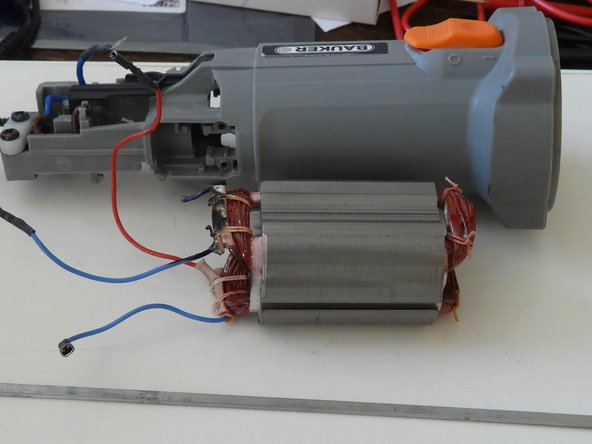crwdns2935425:015crwdne2935425:0




-
To remove the stator from the case, it will almost certainly be necessary to use some sort of tool. It might be possible to use some sort of hook, but I decided to try to tap it out from the rear.
-
However it is vital only to apply taps/force to the laminations away from the winding. The case has some small slots where the brushes fit, and those are directly above sections of laminations.
-
I improvised a simple tool by cutting a short section of an almost rectangular rod from an old ventian blind mechanism. That rod has just the right cross section. The picture shows it inserted into one of the holes and resting against the laminations.
-
It only needed a few light taps each side to drive out the stator.
-
The second picture shows the stator removed from the case, and part of the rod in front. The picture has had to be cropped so only a portion is visible.
-
The stator had suffered damage: most obviously the severed lead, but also blackening in the adjacent area and on the other lead. But the coil was intact, and the lead could be repaired
crwdns2944171:0crwdnd2944171:0crwdnd2944171:0crwdnd2944171:0crwdne2944171:0